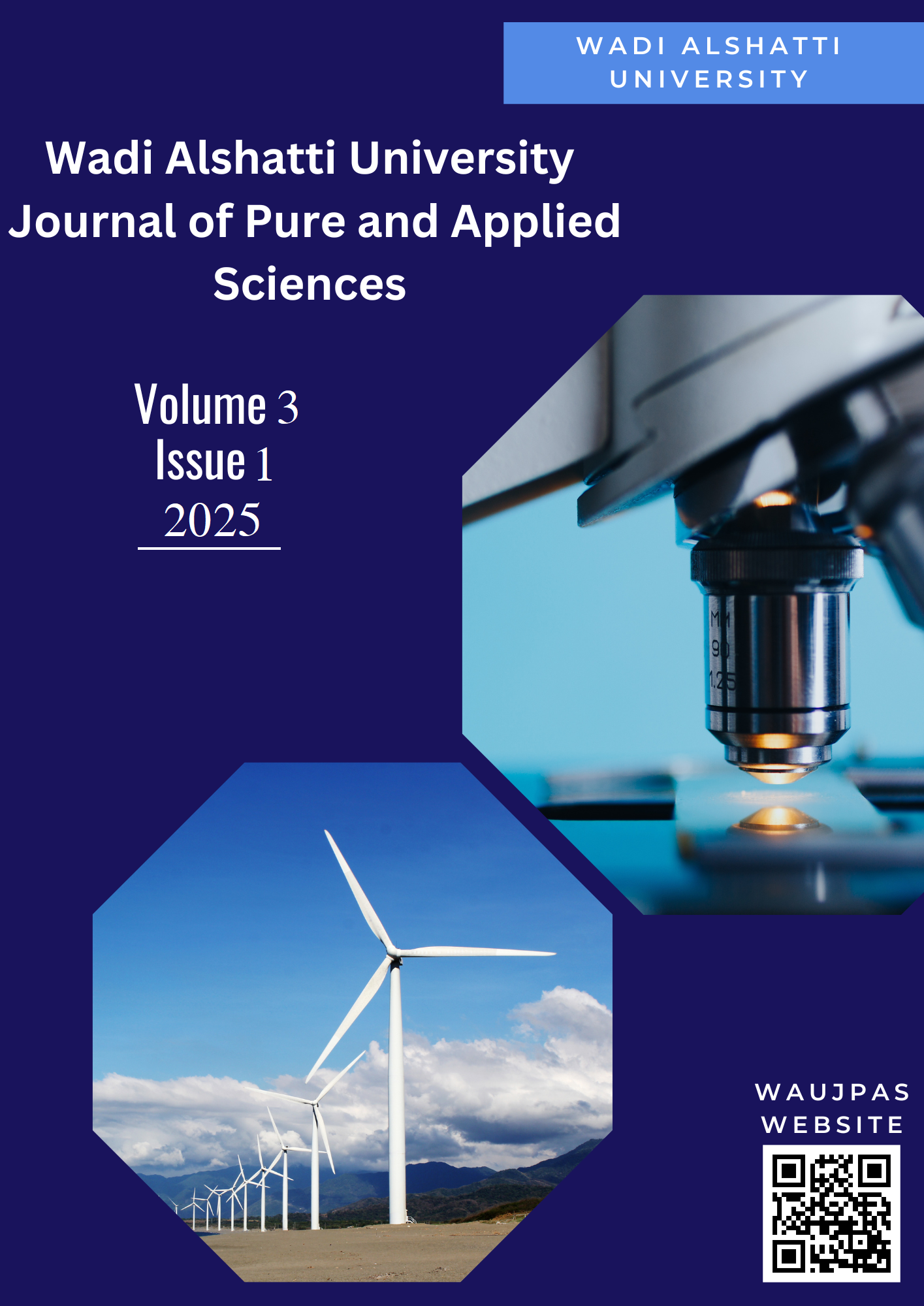Design of Hybrid Renewable Energy System (PV/Wind/Battery) Under Real Climatic and Operational Conditions to Meet Full Load of the Residential Sector: A Case Study of a House in Samno Village– Southern Region of Libya
DOI:
https://doi.org/10.63318/waujpasv3i1_23Keywords:
Solar energy, Wind energy, Hybrid renewable energy, Electrical loads, Real time analysis, LibyaAbstract
The increasing research interest in Hybrid Renewable Energy Systems (HRESs) reflects a global
desire for development and sustainability. Hybrid renewable energy systems aim to meet the
energy demand loads, including residential loads, which constitute the largest electricityconsuming
sector in Libya, accounting for approximately 56% of the total electric energy
consumed in the country in 2022. Consequently, this paper presents a novel approach by designing
and analyzing a hybrid renewable energy system to cover the electrical load based on the power
capacity of the devices and the actual operational time. The study relied on real-time measured
data at 10-minute intervals for climatic conditions (solar radiation intensity, wind speed, and
ambient air temperature) as well as the electrical loads consumed in a household located in Samno,
Sabha, Libya. A dynamic simulation of the proposed system's performance was conducted using
the SAM simulation software, and the results were processed using Microsoft Excel. The results
showed that the proposed hybrid renewable energy system is capable of meeting the required
electrical load, especially during peak times, and supplying power to the electrical grid. The
economic results show that the levelized cost of energy (LCOE) is US$0.0107/kWh.
Downloads
Downloads
Published
Issue
Section
License

This work is licensed under a Creative Commons Attribution-NonCommercial 4.0 International License.
This journal uses Creative Commons Attribution-Noncommerical 4.0 International License (CC BY-NC 4.0), which permits use, sharing, adaptation, distribution and reproduction in any medium or format, as long as you give appropriate credit to the original author(s) and the source, provide a link to the Creative Commons license, and indicate if changes were made. To view a copy of this license, visit https://creativecommons.org/licenses/by-nc/4.0/.
Copyright of articles
Authors retain copyright of their articles published in this journal.





